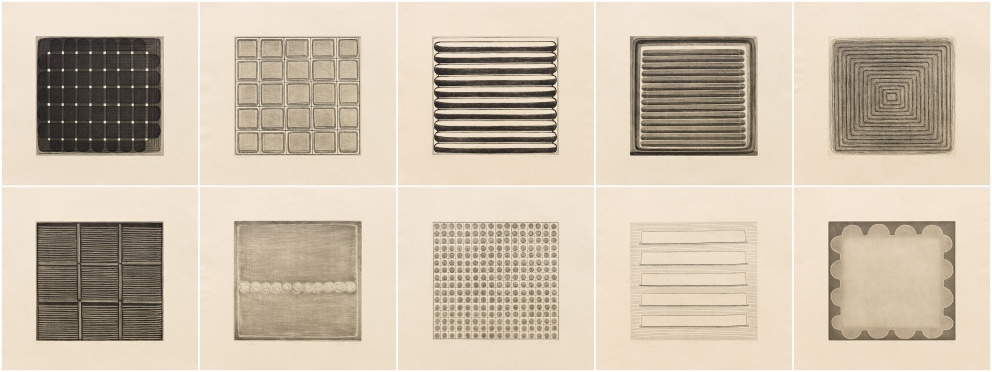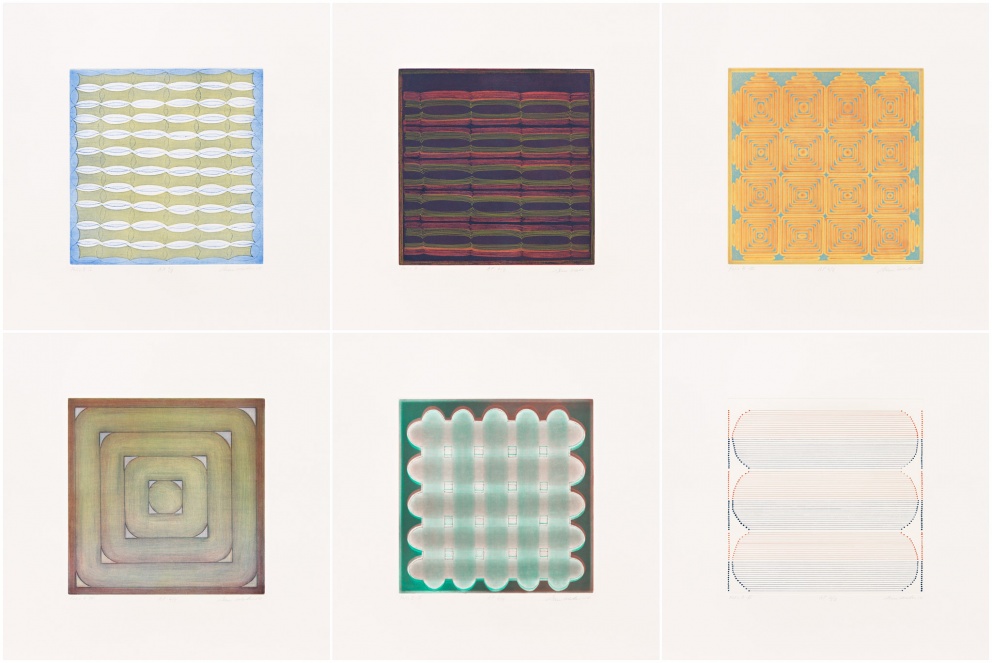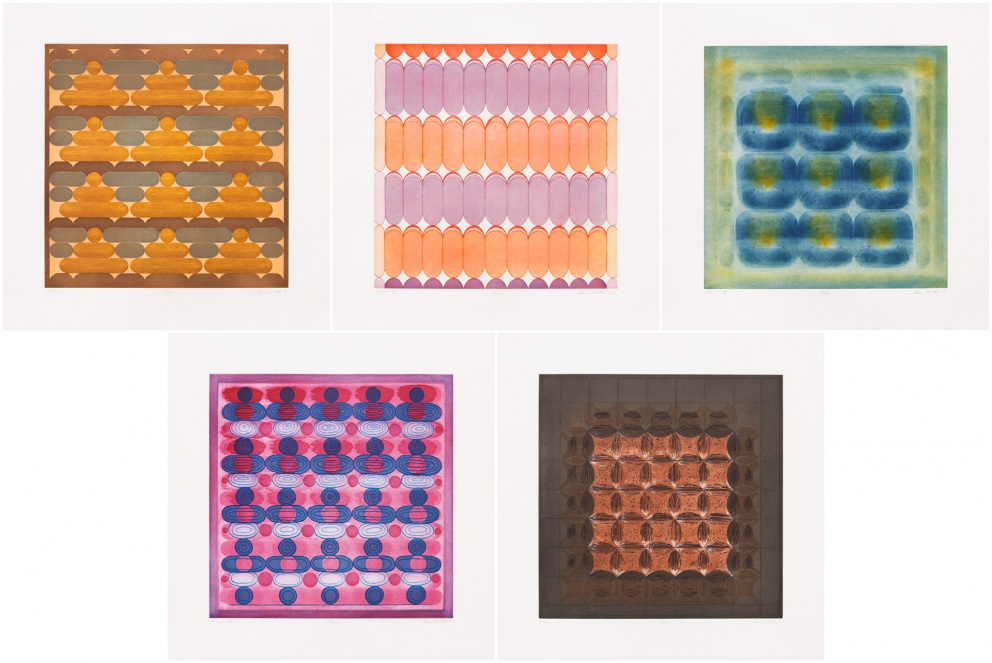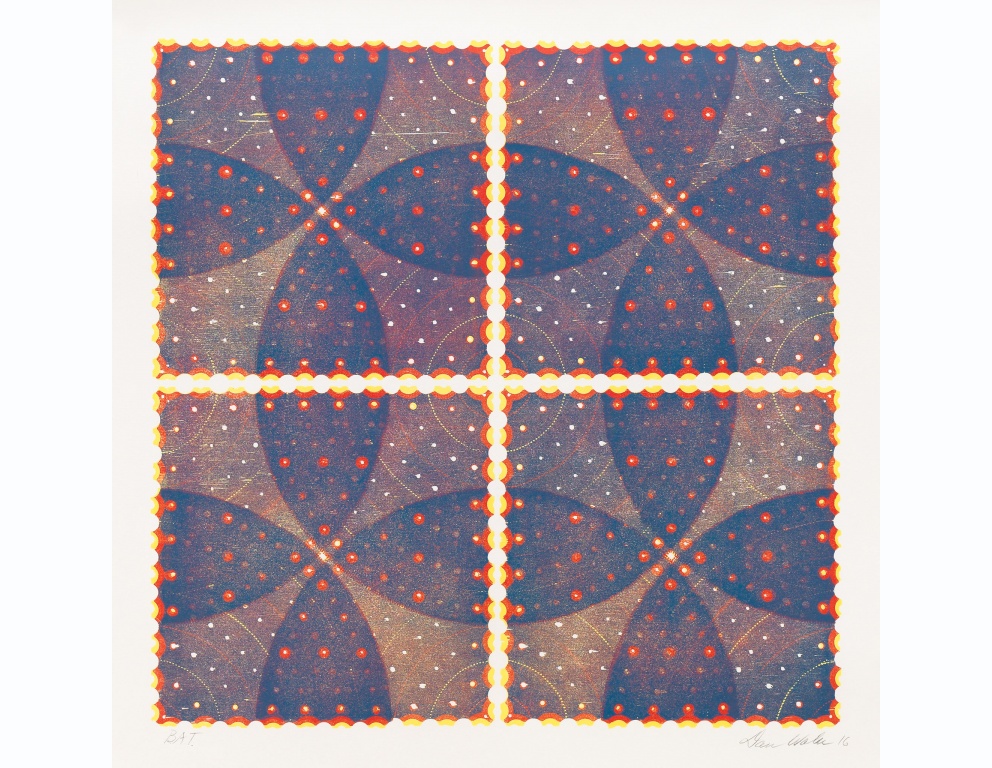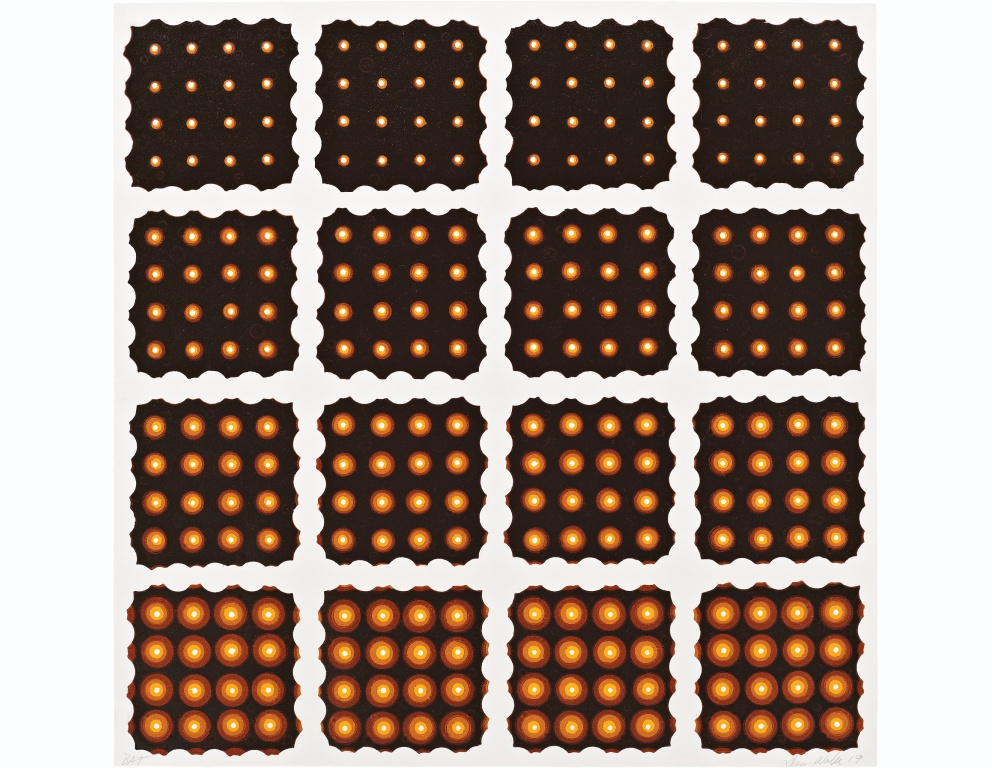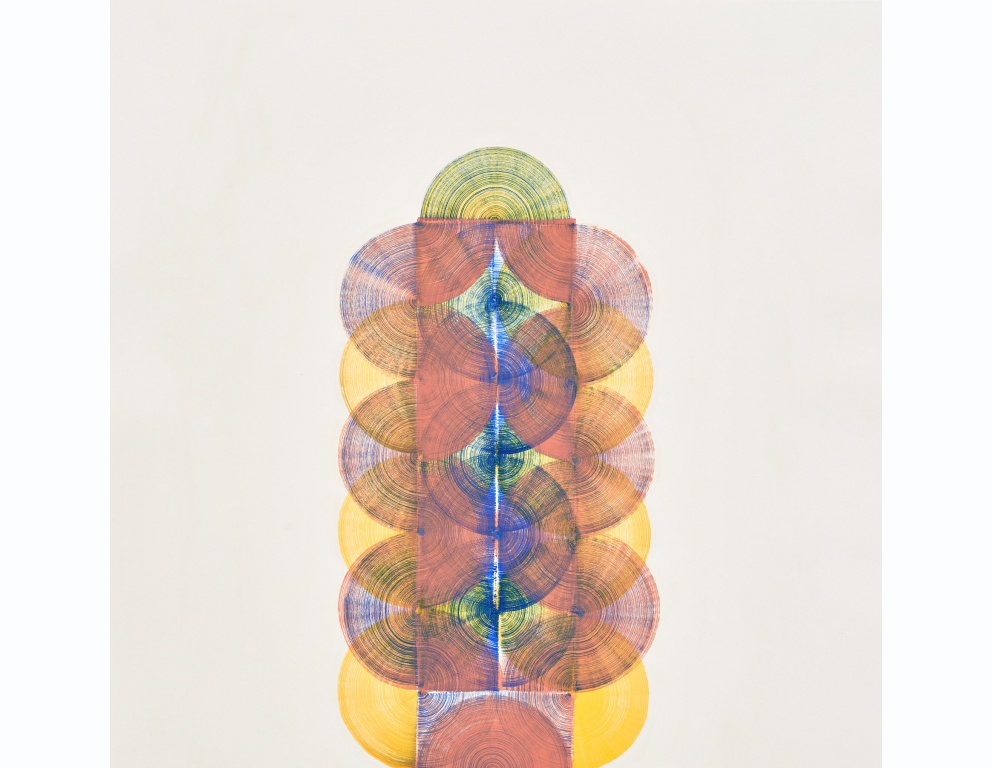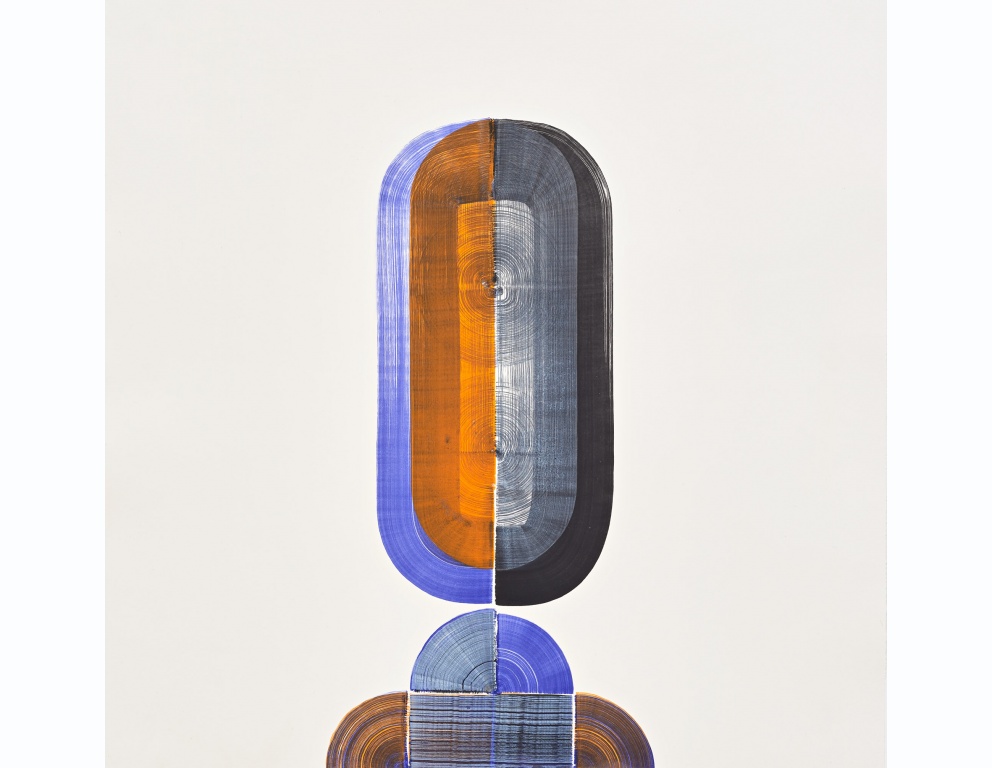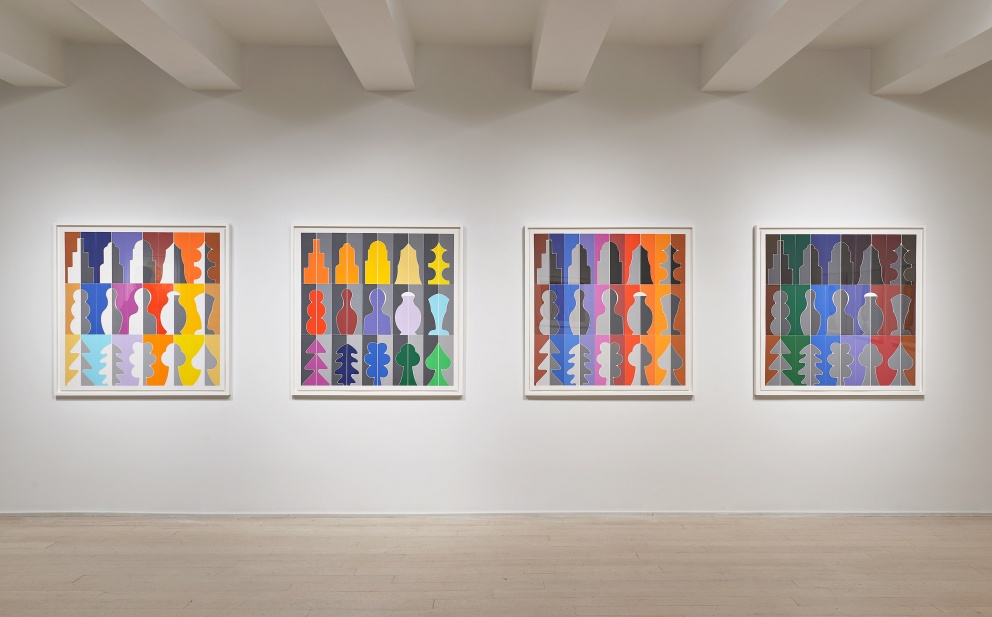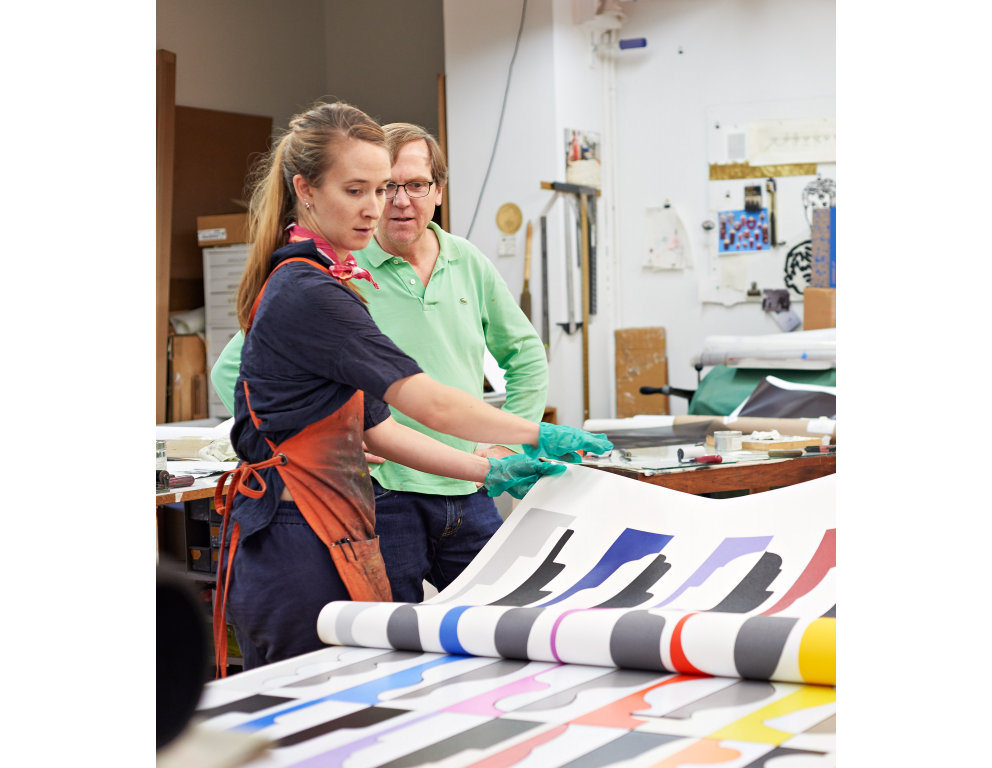-
I have always been told, and I agree, that I paint like a printmaker. I paint in passes.
-
Dan Walsh is a painter, printmaker, and bookmaker born in 1960, at the height of Minimalism. He creates his work from self-imposed rules that challenge the models of seriality, materiality and modularity set forth by the Minimalists of the 1960s and 1970s. Walsh explores perception within geometric pattern by shifting color and form. His organic line and irregular gesture within this formal pursuit creates a flexible minimalism.
Working with Pace Prints over the span of 13 years, Dan Walsh has created prints in almost every medium. He allows the ideas of Minimalism and material investigation to inspire, but not limit, his printmaking practice.
-
Minimalism, with its grid-oriented and elemental base, has shown to be flexible. What was once a rigorous idea about reduction and essentialism is now just a starting point.1
-
"Folio A" (2008)
-
Seriality
Dan Walsh composes structure using layered forms and patterns. The serial nature of his work is expressed in repeating or stacking these geometric formations.
The arrangement of these structures in a serial format is best exemplified by his Folios: Folio A (2008), Folio B (2010), and Folio C (2015). Each is a series within itself, and the multiple groupings form an evolving series.
-
-
One thing you learn quickly, especially in printmaking, is to allow the medium to do some speaking for you, to not give into it so much and to try to celebrate its qualities. Line and color, yes of course, they are there—how they're going to resolve themselves in the end, is not an absolute mystery but it’s what I welcome in this experience.
-
Materiality
Dan Walsh uses various print mediums and techniques, from drilling into woodblocks to painting directly onto plates. With a background in carpentry, Walsh values the economy of means, aiming to get the most out of any material. This physical process fuels the concept and clears a path toward the creation of the work.
Walsh's material investigation is exemplified by Axis (2017), a reduction print created by successive drilling and printing of the block. Section (2019) which employs the same woodblock used in Axis, continues this progress. Axis evolves into Section.
-
In both Figures (2019) and Elements (2016), Walsh pays homage to Minimalism, beginning with a formal constraint. The width of the brush is a constant. Using that as a starting point, Walsh allows himself to experiment within that construct. He states, "I make judgement calls as I go."
-
Dan Walsh painting a monotype plate for the "Figures" series
-
"Elements" (2016)
-
Modularity
Profiles (2019), a series of progressive relief monoprints, employs a puzzle-like system to produce multiple color variants. The use of a jigsaw matrix allows for the splitting and re-inking of 15 modular units, each bisected vertically. Walsh has stratified these abstracted forms such that the top row is architectural, the middle is busts and vessels, and the bottom is vegetable and organic.
Continuing Walsh's interest in perception and optics, Profiles can be decoded as individual parts or as a singular whole, thus inviting a complex way of looking. Walsh describes these works as "a series of signs with many choices, conveying the possibilities of form, over a specific expression."
-
Profiles was a completely Dan Walsh invention—in his home studio, using hardware store materials, he built a puzzle that we could ink and print. In this project, technical ingenuity and playful iteration are equally important; the economy of a single layer of puzzle pieces encouraged maximum experimentation.
–Master Printer Sarah Carpenter
-
Working slowly through numerous variations on a few established themes, Dan Walsh remains focused on geometric abstraction but invests it with just enough humanity to keep formalist ossification at bay. So even while the artist sticks doggedly to repetition and patterning as picture-making devices, he allows a subtle but consistently discernible imperfection to infuse his art with life. Walsh’s style is at once highly systematic and ever so slightly offhand, displaying a simultaneous commitment to conceptual-minimal flawlessness and the wobbles of traditional production.2
-
Footnotes
1. Minimalism, with its grid-oriented and elemental base... “Sign Fiction: Bob Nickas and Dan Walsh in Conversation,” in Dan Walsh: Pressing Matter, exh. cat. (Maastricht, Netherlands: Bonnefantenmuseum, 2019), p.55.
2. Working slowly through numerous variations... “Critics’ Pick: Dan Walsh.” Artforum.com (2010)
All works of art © Dan Walsh
Video interview with Dan Walsh recorded in his studio, 2015 (© Pace Editions)
